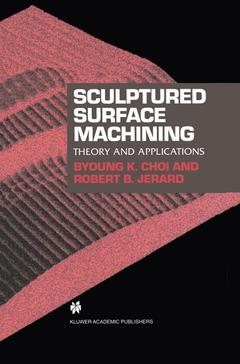Description
Sculptured Surface Machining, 1998
Theory and applications
Authors: Choi Byoung K., Jerard Robert B.
Language: English
Subject for Sculptured Surface Machining:
Approximative price 210.99 €
In Print (Delivery period: 15 days).
Add to cart
Publication date: 10-2012
368 p. · 15.5x23.5 cm · Paperback
368 p. · 15.5x23.5 cm · Paperback
Description
/li>Contents
/li>Comment
/li>
This essential book documents the latest research progress and key issues affecting SSM software development. With a particular focus on the CAD/CAM environment, it provides a rich source of reference and covers a wide range of topics.
Preface. Acknowledgments. Part One: Fundamentals of Sculptured Surface Machining. 1. Introduction to sculptured surface machining. 2. Mathematical background. 3. Sculptured surface machining processes. 4. Process planning for sculptured surface machining. 5. Fundamentals of tool-path generation and validation. Part Two: Tool-Path Generation Methods for Sculptured Surface Machining. 6. Introduction to tool-path generation methods. 7. Tool-path generation for roughing. 8. Tool-path generation for Finishing. 9. Tool-path generation for clean-up machining. 10. Cloud-of-points data machining for reverse engineering. 11. Five axis machining. Part Three: Controlling Accuracy and Quality in Sculptured Surface Machining. 12. Geometric cutting simulation and verification. 13. Cutting force modelling and physical cutting simulation. Part Four: Systems Integration for Sculptured Surface Machining. 14. A Unified CAM-system architecture. 15. Development of integrated SSM-software. 16. CAPP for sculptured surface machining. References. Index.
Sculptured Surface Machining (SSM) plays a vital role in the process of bringing new products to the market place. This book documents the latest research progress and key issues affecting SSM software development. With particular focus on the CAD/CAM environment, it provides a rich source of reference and covers such topics as fundamental mathematical tools, SSM-process models, process planning models and key tool-path generator (TPG), in addition to discussing more advanced theory and technology such as the new 'C space' based TPG methods and 'cloud-of-points' data machining.
© 2024 LAVOISIER S.A.S.




